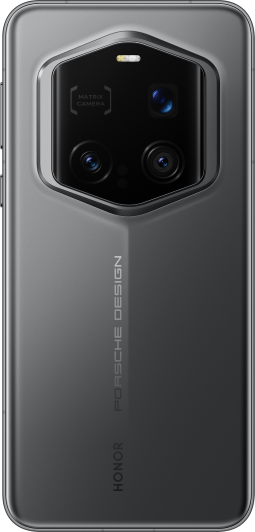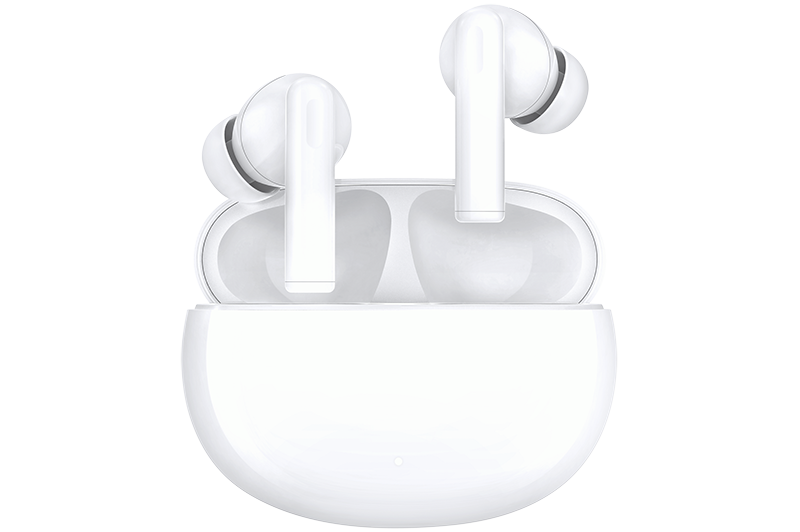TOP

我的荣耀 开启荣耀之旅
To log in to your account, you must first agree to the HONOR PLATFORM TERMS OF USE. If you do not agree, you may only browse the site as a guest.

What Is a Phone Chipset and How Does It Drive Your Device?
We all know chipset is important for a smartphone. But what is a phone chipset exactly? This key component, often considered the heart of any mobile device, plays a pivotal role in defining a smartphone's capabilities, from its processing power to its ability to connect with the world around us.
In this comprehensive guide, we delve into the anatomy of a phone chipset, exploring its essential components—from the CPU and GPU to the AI processor, modem, and other integral parts. We'll also dissect the performance of the popular Snapdragon chipsets to determine if they truly meet your demands. Let's dive in!
What Is a Chipset in a Phone?
A chipset in a phone acts as the brain behind the device, orchestrating every function from the simplest task to the most complex processes. It's a collection of integrated circuits designed to perform various operations that make smartphones smart. Essentially, it controls the communication between the processor, memory, and other peripherals. It determines how fast and efficiently a phone can run applications, manage power consumption, and support connectivity options like 4G LTE and 5G.
Understand the Components in a Chipset
The chipset comprises several components, each responsible for different aspects of the phone's performance. Let's have a closer look:
CPU
The CPU, or Central Processing Unit, serves as the brain of the smartphone, executing instructions from applications and the operating system. It performs calculations, carries out operations, and manages data flow within the device. The CPU's performance is often measured in GHz, indicating how many operations it can perform in a second. A faster CPU enhances the phone's ability to run multiple apps simultaneously, ensuring a smooth and responsive user experience.
GPU
The GPU, or Graphics Processing Unit, is responsible for rendering images, animations, and videos on your phone's display. It handles the visual content, allowing for high-definition gaming, smooth video playback, and quick image processing. The GPU works in tandem with the CPU to offload graphic-intensive tasks, ensuring that visual content is displayed efficiently without overburdening the CPU.
AI Processor
Modern chipsets often include a dedicated AI processor or neural processing unit (NPU). This component is designed to handle machine learning and artificial intelligence tasks, such as image recognition, natural language processing, and predictive texting, with greater efficiency and lower power consumption. AI processors can significantly enhance user experiences by enabling features like real-time language translation, facial recognition for security, and optimizing battery usage based on your habits.
Modem
The modem in a chipset facilitates communication with cellular networks, enabling features like calling, texting, and internet access. It supports various generations of cellular technologies, including 4G LTE and the latest 5G networks. The modem's capabilities determine the speed and quality of your mobile data connection, impacting everything from the clarity of voice calls to the speed of data downloads and uploads.
Other Components
Apart from the CPU, GPU, AI processor, and modem, a smartphone chipset incorporates various other components like memory controllers, image signal processors, and sensor hubs. These components contribute to overall system efficiency, multimedia capabilities, and sensor-based functionalities.
Is Snapdragon Good Enough for Smartphone Chipsets?
Among the various options available in the market, Qualcomm's Snapdragon chipsets stand out for their robust performance and comprehensive feature set. But is Snapdragon truly good enough for today's smartphone needs? Let's delve into several key aspects to find out:
Performance
Snapdragon chipsets are renowned for their exceptional performance. Equipped with powerful CPUs and GPUs, devices powered by Snapdragon deliver smooth multitasking, quick app launches, and optimal performance in demanding applications, including gaming and multimedia. One good example is HONOR 90, which is equipped with the Snapdragon 7 Gen 1 Accelerated Edition, boasting a maximum CPU frequency of 2.5GHz.
Efficiency
Snapdragon chipsets are designed with a focus on power efficiency. Through advanced manufacturing processes and optimization, these chipsets strike a balance between high performance and energy conservation, contributing to longer battery life and overall device efficiency. For example, HONOR Magic6 Lite incorporates a 4nm Snapdragon 6 Gen 1 Gaming Chipset, featuring Fused Accelerator Architecture. This ensures enhanced and swift computing capabilities without compromising battery life.
Integration of Advanced Features
Snapdragon chipsets often integrate cutting-edge features, such as dedicated AI processors (NPUs), advanced camera capabilities, and support for high-speed connectivity standards like 5G. Let’s take HONOR Magic V2 as an example; it is powered by the Snapdragon® 8 Gen 2 Mobile Platform, which showcases innovative AI integration for exceptional experiences. These include swift natural language processing for seamless multi-language translation and transcription, AI-enhanced cinematic video capture for professional-grade content creation, direct voice command for hands-free app navigation, and intelligent AI bots for an immersive gaming experience.
Wide Adoption
The widespread adoption of Snapdragon chipsets by leading smartphone manufacturers is a testament to their quality and performance. From flagship devices to budget-friendly options, Snapdragon processors power a vast range of smartphones across different price segments. This wide adoption not only speaks to the trust and reliability that manufacturers place in Snapdragon but also ensures that users have access to a broad spectrum of devices tailored to their needs and preferences.
Conclusion
Now, you must have a better understanding of what is a phone chipset. It's clear that these silicon brains are the lifeline of our smartphones. They determine not only how efficiently our phones operate but also how they integrate advanced features, manage power consumption, and ultimately, how well they cater to our increasingly digital lives. The examination of Snapdragon chipsets has further illuminated the standards of quality, performance, and efficiency they bring to the table. As technology continues to advance, the evolution of chipsets will undoubtedly play a leading role in shaping the future of mobile devices, making it an exciting area to watch for innovations that will further transform our digital lives.
FAQ
What is the advantage of chipset?
The advantage of a chipset in an electronic device is that it facilitates communication between the processor, memory, and peripheral devices. This coordination ensures that the device operates efficiently and effectively, enhancing performance, reducing power consumption, and enabling support for advanced features and technologies. By efficiently managing these interactions, chipsets improve the overall speed, reliability, and functionality of computers and electronic devices.
How do I know what chipset my phone has?
To identify the chipset of your phone, you can either check the "About Phone" section in the Settings app for details like "Processor" or "Chipset". You can also consult the manufacturer's website or your device's documentation, or simply perform an online search with your phone model followed by "chipset" to find the relevant information quickly.
Can a chipset be replaced?
Yes, a chipset can be replaced, but the feasibility and ease of doing so depend on the device type, the chipset's integration level, and the user's technical expertise. For desktop PCs, it usually means changing the motherboard, which is doable with some technical knowledge. However, for laptops, smartphones, and other compact devices, replacing the chipset is much more challenging due to space constraints and the integration of components, often making it impractical for the average user. In these cases, it's usually more cost-effective to replace the entire device.
Is Snapdragon a processor or a chipset?
Snapdragon is a brand of system-on-chip (SoC) semiconductor products designed and marketed by Qualcomm Technologies. In essence, Snapdragon encompasses both the processor (Central Processing Unit or CPU) and other essential components like the GPU, modem, and AI processor, collectively forming a complete chipset. So, when you refer to a device powered by a Snapdragon processor, you are essentially mentioning the Snapdragon chipset as a whole.
Source: HONOR Club

Subscribe To Our Newsletter - Discover HONOR
Please accept HONOR Platform Privacy Statement.
By entering your WhatsApp number, you agree to receive commercial information on WhatsApp about HONOR products, events, promotions and services. For more details, please see our privacy policy.
Please accept HONOR Platform Privacy Statement.
I agree to receive the latest offers and information on HONOR products, events and services through third-party platforms (Facebook, Google). I may withdraw my consent at any time as indicated in the Privacy Statement.
Contact
Mon-Sat: 09:00 – 18:00. (Except on national holidays).
Third Floor, 136 George St., London, W1H 5LD, United Kingdom.
Copyright © HONOR 2017-2025. All rights reserved.
We use cookies and similar technologies to make our website work efficiently, as well as to analyze our website traffic and for advertising purposes.
By clicking on "Accept all cookies" you allow the storage of cookies on your device. For more information, take a look at our Cookie Policy.
Functional cookies are used to improve functionality and personalization, such as when playing videos or during live chats.
Analytical cookies provide information on how this site is used. This improves the user experience. The data collected is aggregated and made anonymous.
Advertising cookies provide information about user interactions with HONOR content. This helps us better understand the effectiveness of the content of our emails and our website.







































































